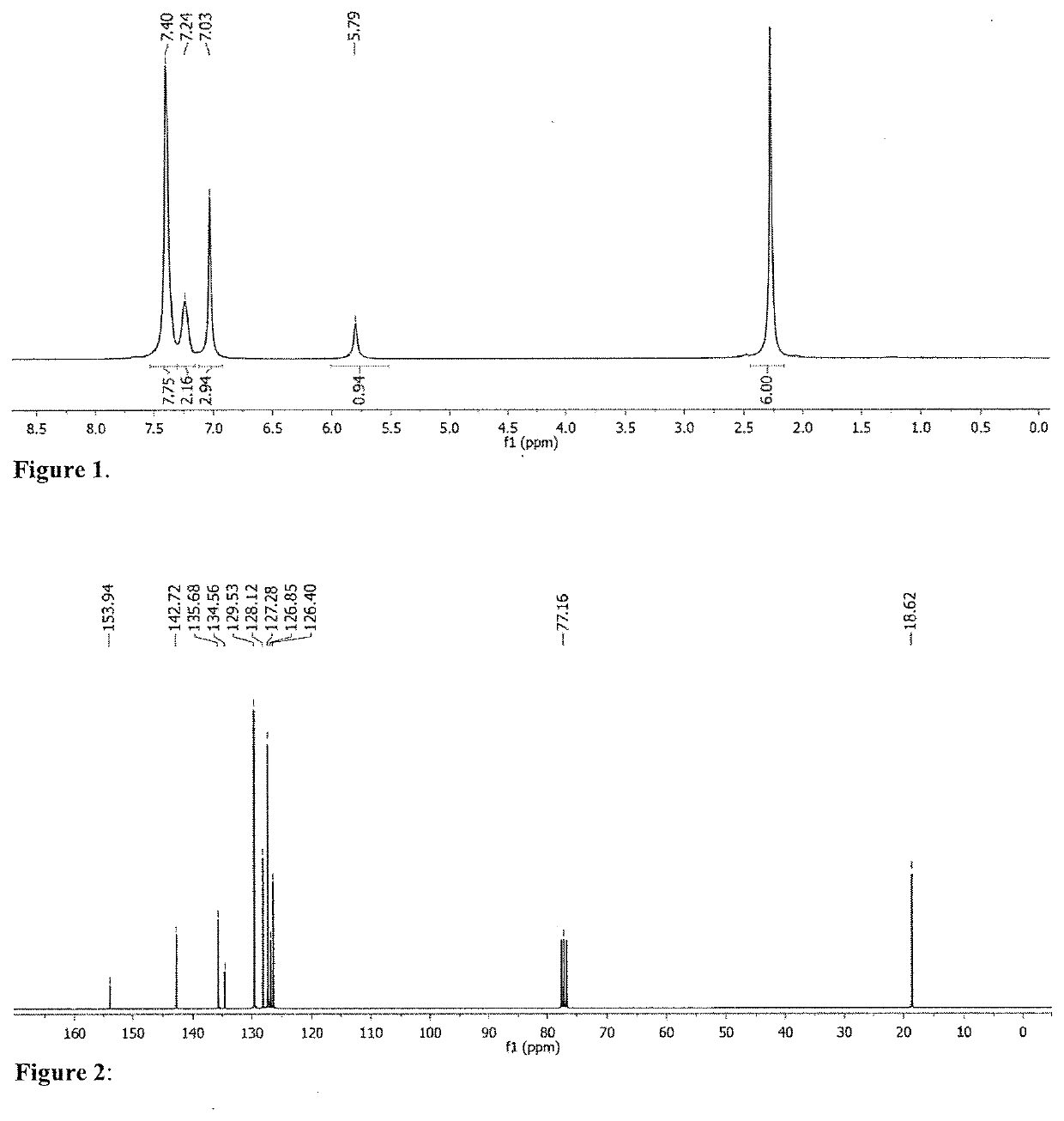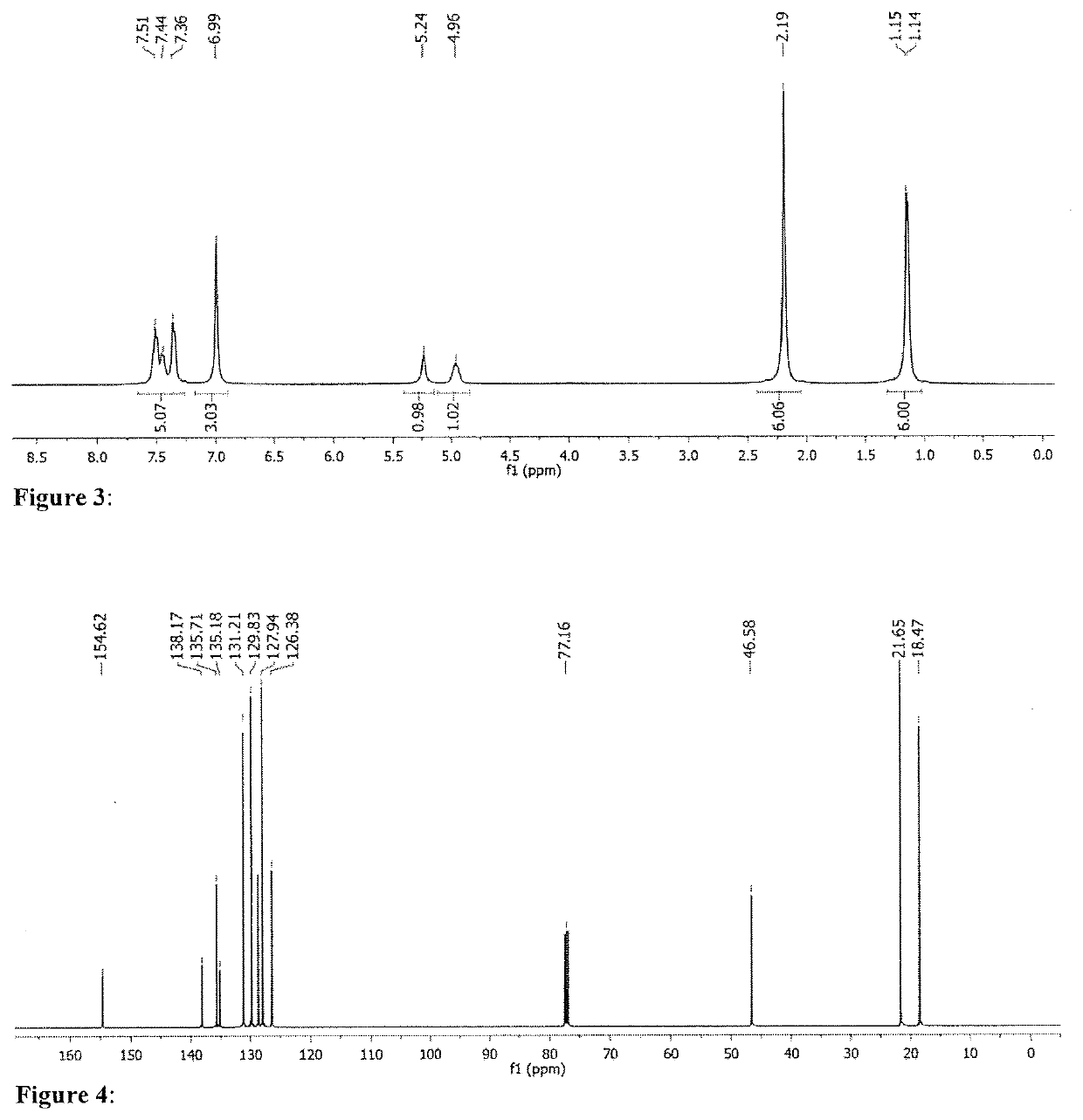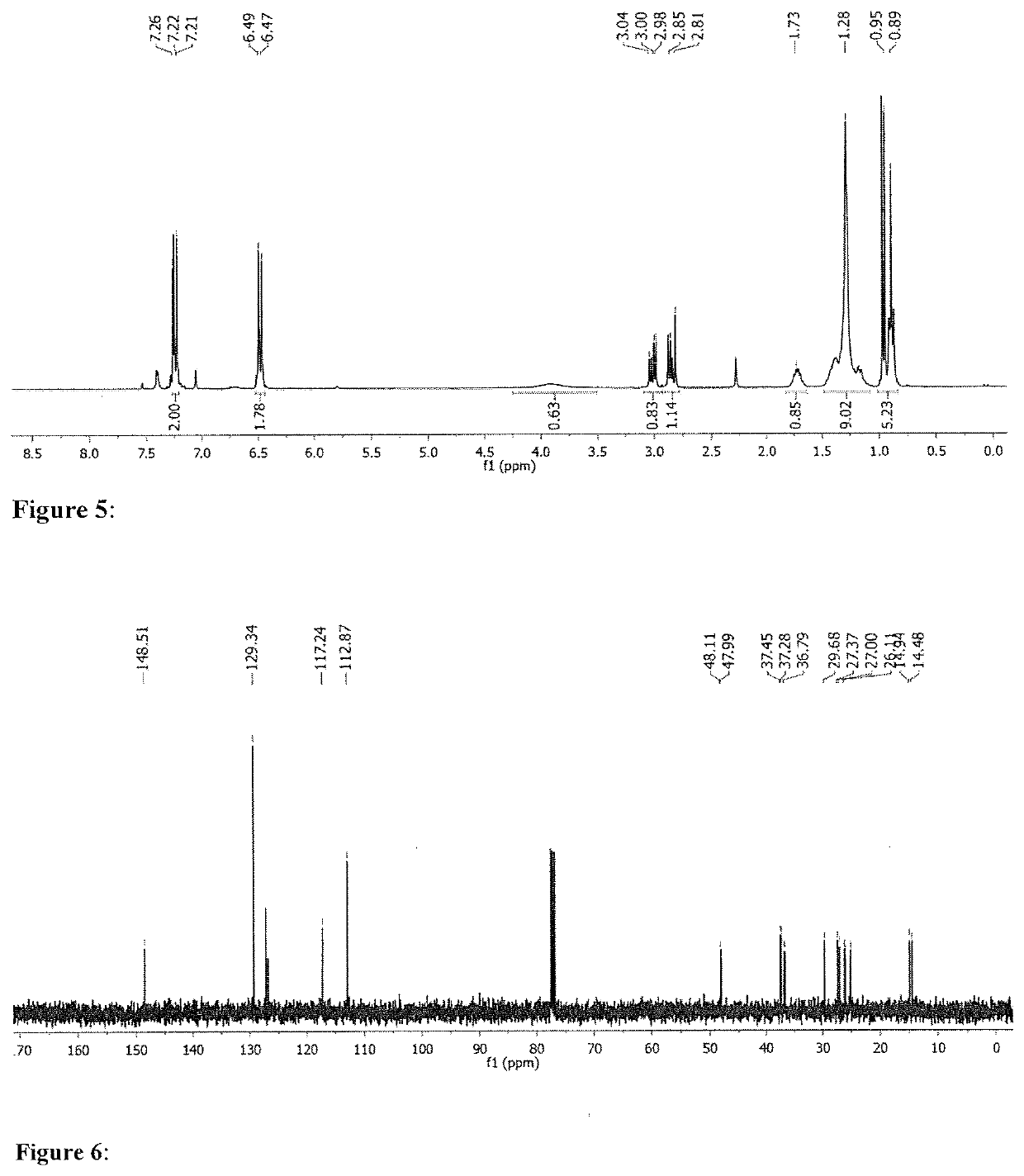Group 5 metal complexes for catalytic amine functionalization
a metal complex and functionalization technology, applied in the field of group 5 metal complexes for catalytic amine functionalization, can solve the problems of long reaction time, many catalysts are not robust enough to tolerate, and the current use of catalytic systems is not easy to achiev
- Summary
- Abstract
- Description
- Claims
- Application Information
AI Technical Summary
Benefits of technology
Problems solved by technology
Method used
Image
Examples
example 1
etal-Based Precursors as Catalysts
[0272]In order to identify potentially promising group 5 metal / ligand salt combinations, the most common Ta precursors were screened in the absence of any ligand salt (Table 1). For this step, the standard benchmark reaction between N-methylaniline and 1-octene was chosen. It has previously been demonstrated that TaMe3Cl2 can catalyse this reaction, reaching a conversion of 91%, after 30 hours at 110° C. using a 10 mol % catalyst loading, but full conversion could never be achieved due to catalyst decay. Hence, optimization of the benchmark reaction was started by reducing the reaction time from 24 h to only 1 h. Under these conditions TaMe3Cl2 could afford a 28% conversion. Further catalytic screening confirmed that Ta-alkyl precursors can competently catalyse the addition of N-methylaniline to 1-octene, with Ta(CH2SiMe3)3Cl2 showing the most promising activity, achieving 39% conversion in only 1 h, when stoichiometric amounts of substrates were us...
example 2
lt Screening Using In-Situ Experiments
[0273]Further catalytic experiments were performed by generating in situ the catalytic species by reacting Ta(CH2SiMe3)3Cl2 with a variety N,O-chelate type ligand salts.
[0274]This study was extended to internal alkenes, adding the more challenging cyclohexene to the pool of substrates. In an effort to perform the catalytic screening under milder conditions, the reaction temperature for reactions using cyclohexene as a substrate were lowered from 145° C. to 130° C. For this step, attention was focussed on amidate (Table 2, L1), phosphoramidate (Table 2, L2), and pyridonate (Table 2, L3) sodium salts. In addition, a variety of ureate type ligand salts were also investigated. The latter type of ligands have previously been studied with group 4 metals for hydroamination and alkyne dimerization catalysis. Catalytic screening of in situ mixtures containing L1 and L2 resulted in no or poor conversion, regardless of the alkene substrate or the chosen re...
example 3
strate Scope
[0278]The study referred to in Tables 2 and 3 was extended by broadening the substrate scope in amine substrates. 1-Octene was kept as the preferred substrate for the terminal alkenes, whereas cyclohexene was swapped with cyclooctene, due to higher reactivity caused by the ring strain. As indicated in Table 5, catalytic mixtures including L6 were used to convert the terminal alkene, while ligand salt L7 was used exclusively for the internal alkene. Another objective was to purify the final products in an easy manner, by avoiding separation on the chromatographic column. For this reason, reaction times were adapted in order to favour full substrate conversion i.e. 2 h for 1-octene and 6 h for cyclooctene. As expected, the reaction between N-methylaniline and 1-octene (Table 5, Entry 1), resulted in a nearly complete conversion of the substrates with a TOF value of 9.5 h−1. Likewise, cyclooctene was fully converted within 6 hours, with an average of 3.3 turnovers per hour ...
PUM
| Property | Measurement | Unit |
|---|---|---|
| temperature | aaaaa | aaaaa |
| temperature | aaaaa | aaaaa |
| temperature | aaaaa | aaaaa |
Abstract
Description
Claims
Application Information
 Login to View More
Login to View More - R&D
- Intellectual Property
- Life Sciences
- Materials
- Tech Scout
- Unparalleled Data Quality
- Higher Quality Content
- 60% Fewer Hallucinations
Browse by: Latest US Patents, China's latest patents, Technical Efficacy Thesaurus, Application Domain, Technology Topic, Popular Technical Reports.
© 2025 PatSnap. All rights reserved.Legal|Privacy policy|Modern Slavery Act Transparency Statement|Sitemap|About US| Contact US: help@patsnap.com



